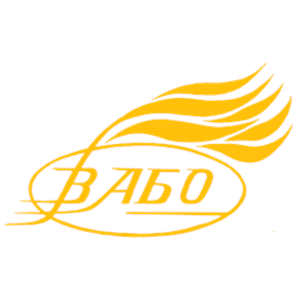SYSTEMS APPROACH AND ITS ROLE IN AUTOMATION AND TECHNOLOGY OF PUBLIC ADMINISTRATIO
DOI:
https://doi.org/10.32782/2786-5681-2025-1.08Keywords:
system approach, public administration, technical equipment, information technology, management mechanismsAbstract
Substantiation of the processes of functioning and activity of organizations, institutions, objects by sectors, goals and purposes is based on the systemic approach as an essential characteristic of managerial actions and influences at the state level. Because each element of the system is determined by a set of variables that characterize the state of spheres and environments subordinate to the state, determined by the ability to conduct functions and regulatory influences.Also, the systemic approach in the forms of its own reflections is manifested by the interconnections between various elements, as a result of which structured graphs are formed in a schematic form. In particular, this applies to public administration and its subordinate spheres of activity, the social environment, municipalities, sectors of the economy, and budgetary institutions.The system approach is generalized by the technical equipment of structural units, which are organizations, institutions, objects that function and direct actions according to their own visions, controlling influences and processes using information and communication technologies. And such technologies are interconnected with structural units subordinate to the state.This reflects the innovative development of public administration, which demonstrates the passage of information flows through structural formations in any form and form – documentary support, dialog interfaces, video and photo images.While the carriers of these information flows are specialized software, automated platforms, information and analytical complexes, terminals, digital centers, etc. It is this approach that reflects the systematic formation of activities and the performance of basic functions by organizations, institutions, as well as other objects at the state level, where specific ministries and departments are involved.The purpose of the article is to substantiate the processes and scope of digitalization of management at the state level, where a systemic approach is of particular importance, which is generalized by spheres, objects and their spaces, and the management mechanisms intended for this are also manifested.The research methodology consists of the methods on which the author relies, in particular, system analysis, synthesis and generalization. The author notes that in addition to modeling methods, the following can be used: testing; observation of the implementation of the educational process and educational activities in educational institutions; study of documentation, processing of statistical data on the state of public administration and its development in the field of education.The scientific novelty of the work lies in the fact that the author understands the modeling of the educational sphere in public administration as its structural reflection for the purpose of applying a systemic approach.Conclusions. Thus, a systemic approach allows overcoming uncertainty in public administration, namely: a schematic depiction of specific objects, a reflection of processes and phenomena by mathematical models, a built-in algorithmization of actions. A systemic approach in public administration is understood as directions and measures aimed at the restructuring and development of educational institutions in the conditions of digital transformation of social processes.
References
Виклюк Я. І., Камінський Р. М., Пасічник В. В. Моделювання складних систем : посібник. Львів : Видавництво «Новий світ – 2000», 2017. 404 с.
Електронне урядування та електронна демократія: навчальний посібник. У 15 ч. / за заг. ред. А. І. Семенченка, В. М. Дрешпака. Київ, 2017. Частина 4 : Публічна політика та управління розвитком інформаційного суспільства та електронного урядування / [А. І. Семенченко, А. О. Серенок]. Київ : ФОП Москаленко О. М., 2017. 80 с.
Електронне урядування та електронна демократія : навчальний посібник. У 15 ч. / за заг. ред. А. І. Семенченка, В. М. Дрешпака. Київ, 2017. Частина 15 : Технології розвитку електронного урядування та електронної демократії / [Ю. Б. Пігарєв, А. Г. Ложковський, Т. М. Маматова]. Київ: ФОП Москаленко О. М., 2017. 52 с.
Закон України «Про національну програму інформатизації» від 1 грудня 2022 р. № 2807-ІХ. Відомості Верховної Ради. 2023. № 51. ст. 127. URL : https://zakon.rada.gov.ua/laws/show/2807-20#Text
Мельник А. Ф., Оболенський О. Ю., Васіна А. Ю. Державне управління : підручник. За ред. А. Ф. Мельник. Київ : Знання, 2009. 582 с.
Методологія наукових досліджень з державного управління: хрестоматія. С. В. Загороднюк, О. Л. Євмєшкіна, В. В. Лещенко та ін. За заг. ред. д-ра політ. наук К. О. Ващенка. Київ : НАДУ, 2014. 180 с.
Попов С. А. Державно-управлінські нововведення : теорія, методологія, практика : монографія. Одеса : ОРІДУ НАДУ, 2014. 296 с.
Розпорядження Кабміну України «Про схвалення Концепції розвитку системи надання адміністративних послуг органами виконавчої влади» від 15 лютого 2006 p. № 90-р. Офіційний вісник України. 2006. № 7. С. 167.
Розпорядження Кабміну України «Деякі питання реформування державного управління України» від 24 червня 2016 p. № 474-р. URL: https://zakon.rada.gov.ua/laws/show/474-2016-%D1%80#Text
Чикаренко І. А., Бородін Є. І. Програмно-цільовий інструментарій управління розвитком та співробітництвом об’єднаних територіальних громад. URL : https://grani-print.dp.ua/index.php/home/article/view/100
Шевченко Л. Г., Курінний О. В. Джерела системного підходу в методології публічного управління сталим розвитком. URL: http://www.dbuapa.dp.ua/zbirnik/2016-01(15)/7.pdf
Щиріна К. В., Толстанов О. К. Основні теоретико-методологічні підходи до управління медичним закладом в умовах кризи. Наукові перспективи. 2020. №1 (1). С. 119–134.







